Are you applying Marketing & Color Psychology to your brand?
Marketing is a crucial aspect of any business, as it involves promoting products or services to potential customers.
It encompasses various strategies and techniques aimed at attracting and engaging consumers.
One often overlooked but highly influential factor in marketing is color psychology. Color psychology refers to the study of how colors can affect human emotions, behavior, and decision-making processes.
Understanding the impact of color psychology in marketing is essential for businesses to effectively communicate their brand message and connect with their target audience.
Key Takeaways
- Color plays a crucial role in marketing and can greatly impact consumer emotions and behavior.
- Red is a powerful color that can evoke excitement, urgency, and passion in consumers.
- Blue is a calming color that can create a sense of trust, security, and reliability in consumers.
- Yellow is a cheerful color that can evoke feelings of happiness, optimism, and warmth in consumers.
- Green is a trustworthy color that can create a sense of balance, harmony, and growth in consumers.
The Importance of Color in Marketing
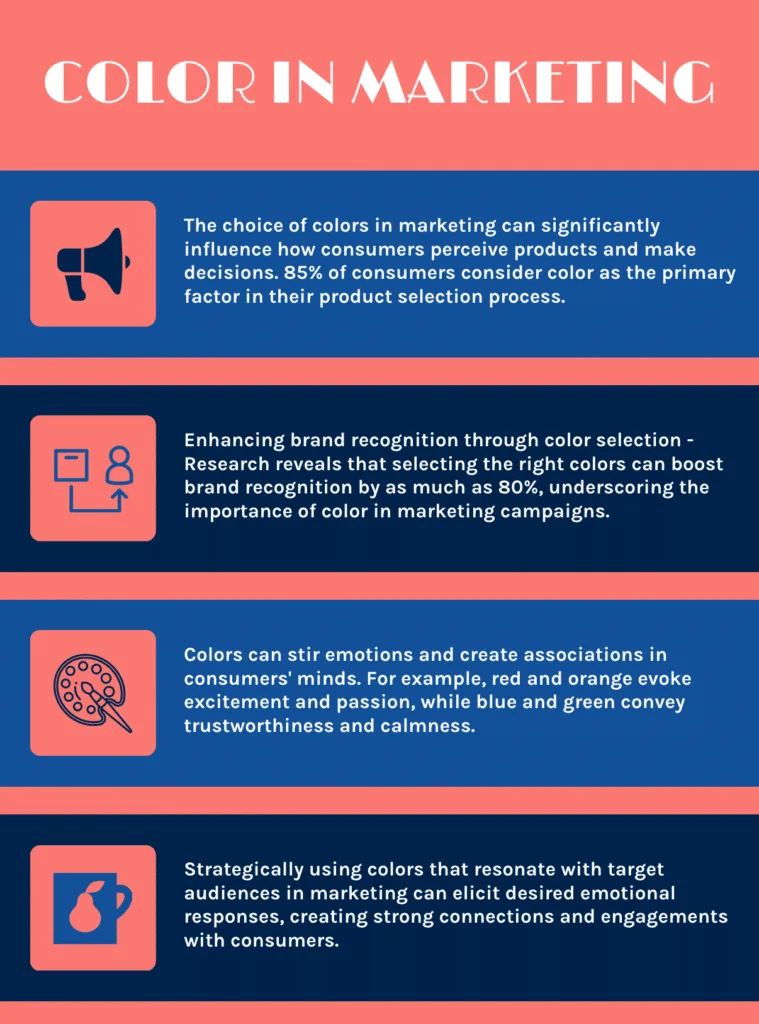
Colors have a profound impact on human perception and can significantly influence consumer behavior.
According to research, 85% of consumers believe that color is the primary reason they choose a particular product.
Moreover, studies have shown that color can increase brand recognition by up to 80%. These statistics highlight the importance of selecting the right colors in marketing campaigns.
Color has the power to evoke specific emotions and create associations in consumers’ minds.
For example, warm colors like red and orange are often associated with excitement, passion, and energy.
On the other hand, cool colors like blue and green are linked to calmness, trustworthiness, and reliability.
By strategically incorporating these colors into marketing materials, businesses can elicit desired emotional responses from their target audience.
How Color Affects Emotions
Color has a direct impact on human emotions due to its ability to stimulate certain areas of the brain.
Different colors can evoke various emotional responses, which can influence consumer decision-making processes.
For instance, red is known to increase heart rate and create a sense of urgency, making it an effective color choice for clearance sales or limited-time offers.
In addition to influencing emotions, color plays a crucial role in creating brand identity.
Consistently using specific colors in marketing materials helps consumers associate those colors with a particular brand.
This association becomes ingrained in their minds over time, making it easier for businesses to establish brand recognition and loyalty.
The Mind of Marketing & Color Psychology
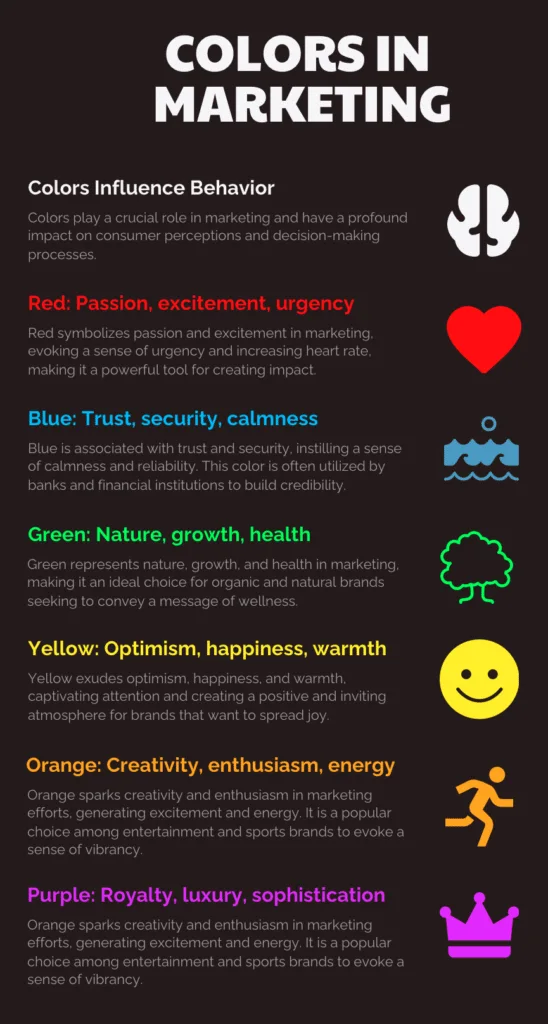
The psychology behind color choices in marketing is a complex field that involves understanding the cultural, social, and personal associations people have with different colors.
Each color carries its own set of meanings and messages, which can vary across different cultures and contexts.
For example, red is often associated with love, passion, and excitement in Western cultures.
However, in some Eastern cultures, red symbolizes luck and prosperity. Similarly, green is commonly associated with nature and environmental consciousness in many societies, while in others, it may represent jealousy or greed.
Understanding these cultural nuances is crucial for businesses operating in diverse markets.
By tailoring their color choices to align with the cultural preferences of their target audience, businesses can effectively communicate their brand message and build stronger connections with consumers.
The Power of Red in Marketing

Red is a color that demands attention and evokes strong emotions. It is often associated with passion, love, and excitement.
In marketing, red can be used to create a sense of urgency or to grab the viewer’s attention.
For example, many fast-food chains use red in their logos and branding to stimulate appetite and create a sense of urgency.
Red is also commonly used in clearance sales or limited-time offers to create a sense of urgency and encourage immediate action.
The color red has been proven to increase heart rate and stimulate appetite, making it an effective choice for businesses looking to drive sales.
The Calming Effect of Blue in Marketing

Blue is a color often associated with calmness, trustworthiness, and reliability. It has a soothing effect on the mind and can create a sense of tranquility. Many financial institutions use blue in their branding to convey a sense of trustworthiness and stability.
Blue is also commonly used in healthcare marketing due to its calming properties. Hospitals and medical facilities often incorporate blue into their logos and interior design to create a peaceful and reassuring environment for patients.
The Cheerful Nature of Yellow in Marketing

Yellow is a color that is often associated with happiness, optimism, and energy.
It can grab attention and create a sense of cheerfulness. Many food brands use yellow in their marketing to evoke feelings of happiness and energy.
Yellow is also commonly used in marketing to target impulse buyers.
Its vibrant and attention-grabbing nature makes it an effective choice for businesses looking to attract spontaneous purchases.
The Trustworthiness of Green in Marketing

Green is a color often associated with nature, growth, and harmony.
It represents freshness and environmental consciousness. Many eco-friendly brands use green in their marketing to convey a sense of sustainability and trustworthiness.
Green is also commonly used in the health and wellness industry due to its association with natural ingredients and holistic approaches.
By incorporating green into their branding, businesses can appeal to consumers seeking products or services that align with their values.
The Sophistication of Black in Marketing
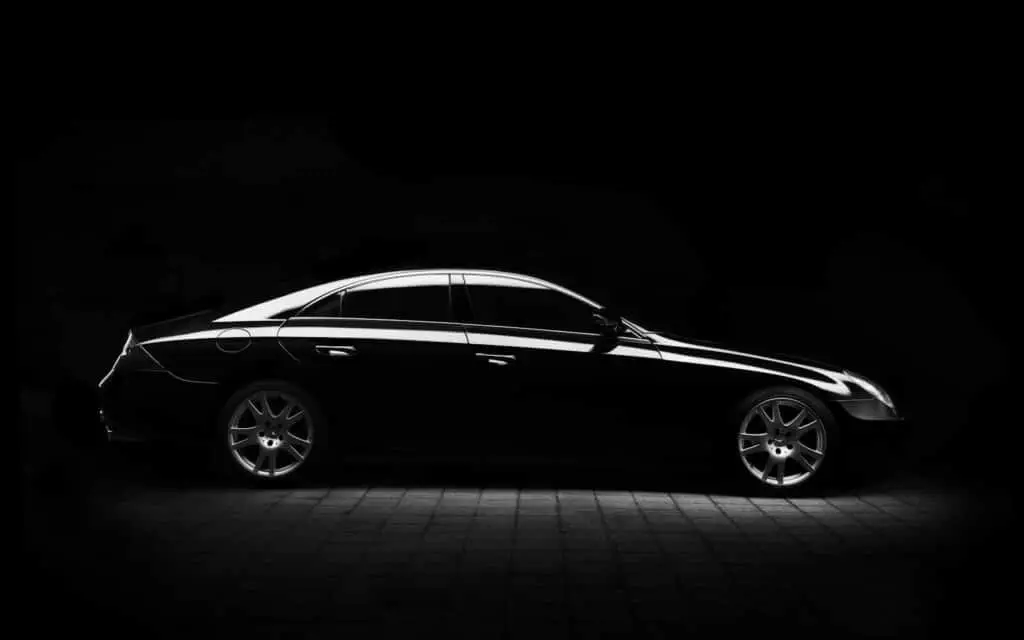
Black is a color often associated with sophistication, elegance, and power.
It exudes a sense of luxury and exclusivity. Many high-end fashion brands use black in their marketing to convey a sense of prestige and sophistication.
Black is also commonly used in technology marketing to create a sleek and modern image.
By incorporating black into their branding, businesses can position themselves as leaders in their industry.
The Innocence of White in Marketing
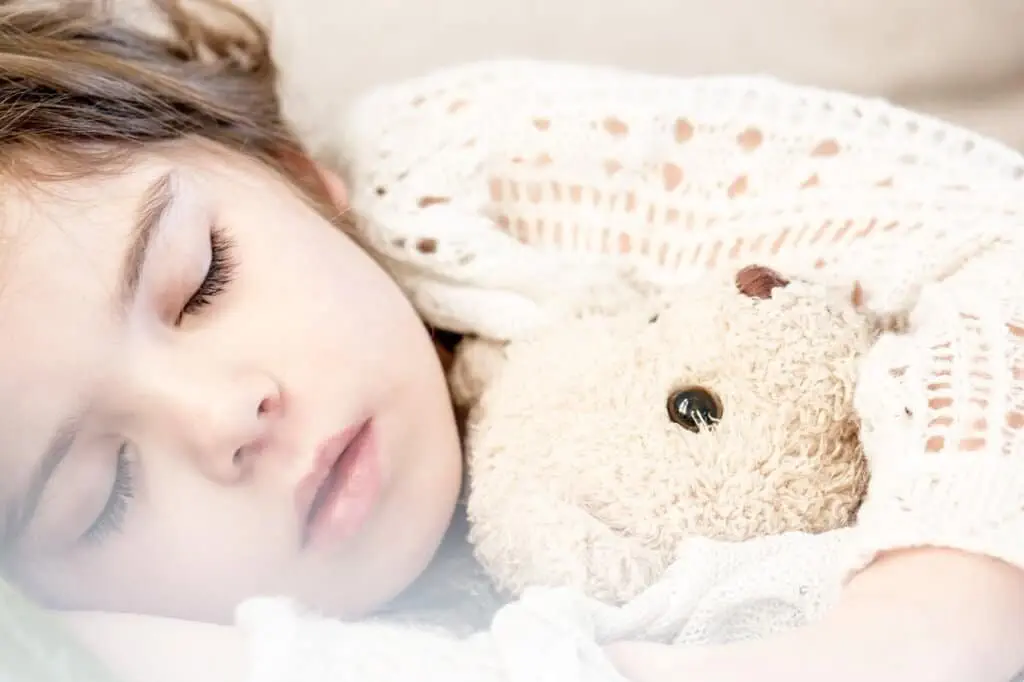
White is a color often associated with purity, innocence, and simplicity.
It represents cleanliness and neutrality. Many healthcare brands use white in their marketing to convey a sense of cleanliness and professionalism.
White is also commonly used in minimalist branding to create a clean and modern aesthetic.
By incorporating white into their marketing materials, businesses can create a sense of simplicity and elegance.
The Playfulness of Orange in Marketing

Orange is a color that combines the energy of red and the cheerfulness of yellow.
It is often associated with enthusiasm, creativity, and playfulness. Many entertainment brands use orange in their marketing to evoke feelings of excitement and fun.
Orange is also commonly used in marketing to target impulse buyers. Its vibrant and energetic nature makes it an effective choice for businesses looking to create a sense of urgency and encourage immediate action.
The Luxury of Gold in Marketing
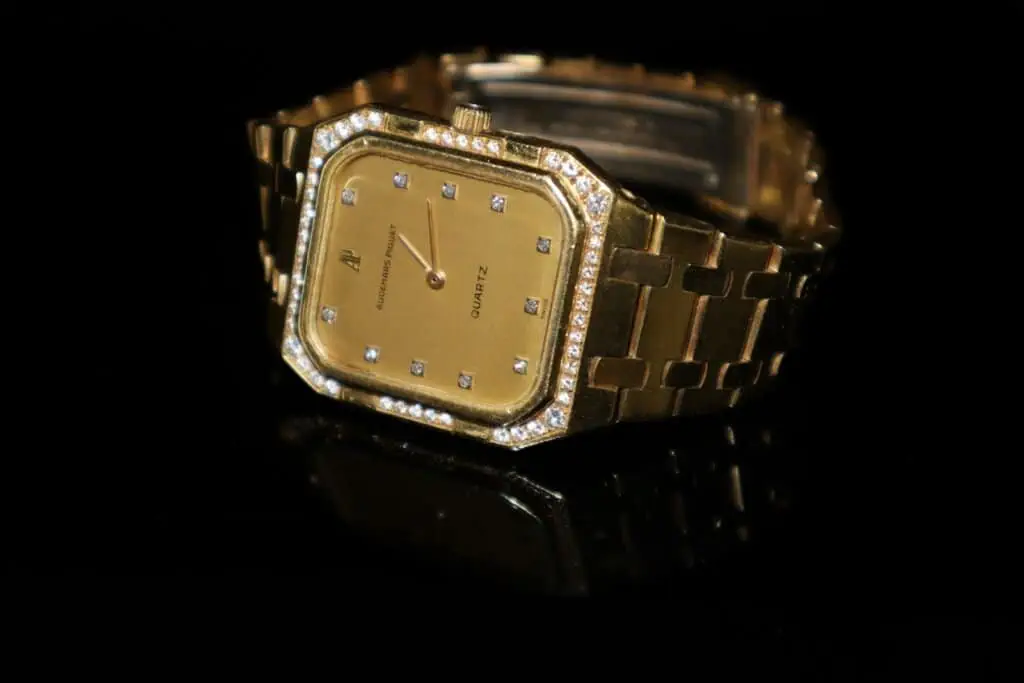
Gold is a color often associated with luxury, wealth, and success. It represents opulence and exclusivity. Many luxury brands use gold in their marketing to convey a sense of prestige and sophistication.
Gold is also commonly used in marketing to create a sense of value and quality. By incorporating gold into their branding, businesses can position themselves as providers of high-end products or services.
The Femininity of Pink in Marketing
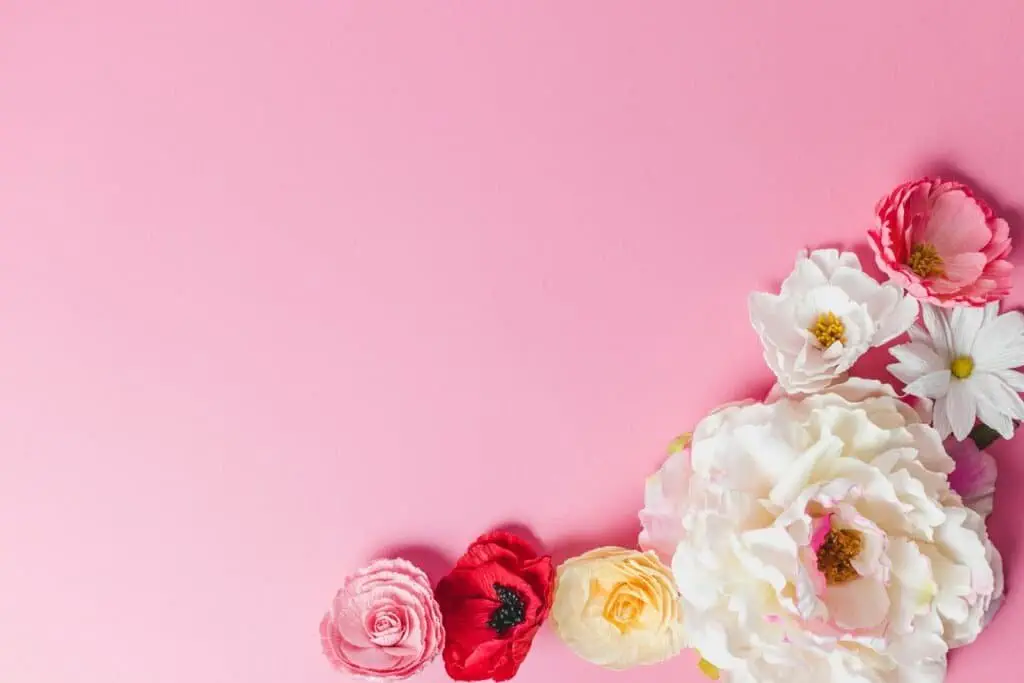
Pink is a color often associated with femininity, romance, and sweetness. It represents compassion and nurturing. Many beauty and fashion brands use pink in their marketing to target female consumers and evoke feelings of femininity.
Pink is also commonly used in marketing to create a sense of playfulness and youthfulness. By incorporating pink into their branding, businesses can appeal to consumers seeking products or services that align with these qualities.
Beyond Marketing & Color Psychology
Understanding Marketing & Color Psychology is crucial for businesses looking to effectively communicate their brand message and connect with their target audience.
Colors have the power to evoke specific emotions, create brand associations, and influence consumer behavior.
By strategically selecting colors that align with their brand values and target audience preferences, businesses can enhance their marketing efforts and drive better results.
So, the next time you embark on a marketing campaign, remember the power of color and use it intentionally to make a lasting impact on your audience.
FAQs
What is color psychology?
Marketing & Color Psychology is the study of how colors affect human behavior and emotions. It explores the impact of different colors on people’s moods, feelings, and perceptions.
How can Marketing & Color Psychology be used?
Marketing & Color Psychology can be used in marketing to influence consumer behavior and decision-making. By using certain colors in branding, advertising, and product design, marketers can create specific emotional responses and associations with their brand.
What are some common color associations?
Some common color associations include red for passion and excitement, blue for trust and reliability, green for nature and health, yellow for happiness and optimism, and black for sophistication and luxury.
What is color contrast?
Color contrast refers to the difference between two colors used in a design or image. High contrast can create a bold and attention-grabbing effect, while low contrast can create a more subtle and calming effect.
How can contrast be used in Marketing & Color Psychology?
Color contrast can be used in marketing to draw attention to specific elements of a design or advertisement. By using contrasting colors, marketers can create a visual hierarchy that guides the viewer’s eye to the most important information.
What is color harmony?
Color harmony refers to the combination of colors used in a design or image. Harmonious color schemes use colors that are complementary or analogous, creating a pleasing and balanced effect.
How can harmony be used in Marketing & Color Psychology?
Color harmony can be used in marketing to create a cohesive and visually appealing brand identity. By using a consistent color scheme across all marketing materials, marketers can reinforce their brand’s personality and values.
What is color temperature?
Color temperature refers to the perceived warmth or coolness of a color. Warm colors like red and orange are associated with energy and excitement, while cool colors like blue and green are associated with calmness and relaxation.
How can color temperature be used in Marketing & Color Psychology?
Color temperature can be used in marketing to create a specific mood or atmosphere. By using warm colors in advertising for a high-energy product like sports drinks, for example, marketers can create a sense of excitement and urgency.
What is color saturation?
Color saturation refers to the intensity or purity of a color. Highly saturated colors are bright and bold, while desaturated colors are more muted and subdued.
How can saturation be used in Marketing & Color Psychology?
Color saturation can be used in marketing to create a specific tone or mood. Highly saturated colors can create a sense of energy and excitement, while desaturated colors can create a more calming and sophisticated effect.




